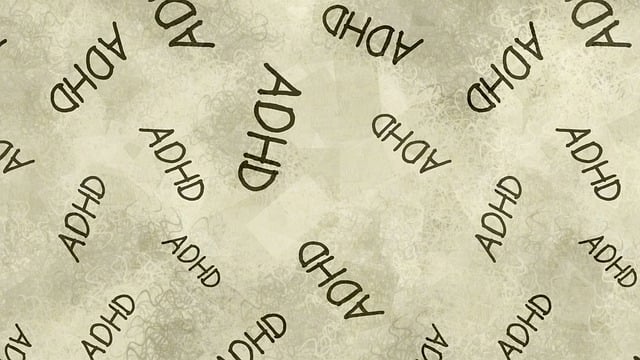Risk assessment in therapy for couples communication issues is a strategic process that identifies vulnerabilities and minimizes potential harms through tailored interventions. By integrating cultural sensitivity, compassion cultivation, trauma support services, and crisis management guidelines, therapists create a safe environment for open communication. This holistic approach enhances relationship connections, promotes emotional understanding, and equips couples with effective conflict resolution strategies, ultimately fostering resilience and positive outcomes. Continuous evaluation ensures the therapy remains dynamic, addressing evolving needs and contributing to stronger, more communicative partnerships.
Risk assessment and harm minimization planning are essential components of safe and effective therapy, particularly in couples counseling. This article guides therapists through a comprehensive approach to ensuring client safety, focusing on understanding risk assessment as a foundational tool. We explore identifying potential harms, vulnerable populations, and developing tailored strategies for communication and risk management. By implementing these practices, therapists can address therapy for couples’ communication issues while minimizing risks and fostering a secure environment.
- Understanding Risk Assessment: A Foundation for Safe Therapy
- Identifying Potential Harms and Vulnerable Populations in Couples Therapy
- Developing a Comprehensive Harm Minimization Plan
- Implementing Strategies for Effective Communication and Risk Management
- Continuous Evaluation and Adjustment: Ensuring Client Safety and Well-being
Understanding Risk Assessment: A Foundation for Safe Therapy

Risk assessment is a cornerstone in the field of therapy, especially when addressing complex issues like couples’ communication problems. It involves meticulously examining potential hazards and their likelihood within the therapeutic context, ensuring a safe and supportive environment for clients. This process requires therapists to delve into various factors that might contribute to distress or complications during treatment, from personal vulnerabilities to interpersonal dynamics.
By integrating cultural sensitivity in mental healthcare practice and compassion cultivation techniques, therapists can enhance their risk assessment skills. These approaches encourage practitioners to consider the unique backgrounds and experiences of couples, enabling them to tailor stress reduction methods accordingly. Effective harm minimization planning, thus, becomes a collaborative effort, fostering open communication and empowering couples to navigate their therapeutic journey with confidence and resilience.
Identifying Potential Harms and Vulnerable Populations in Couples Therapy

In couples therapy for communication issues, identifying potential harms and vulnerable populations is a critical step in risk assessment. This process involves recognizing not only the specific challenges that bring couples to therapy but also the underlying factors that may exacerbate these issues. For instance, historical or ongoing trauma within one or both partners can significantly impact their ability to communicate effectively and resolve conflicts. Trauma support services play a crucial role here, as they help clients process past traumas, which can improve present-day communication dynamics.
Additionally, cultural sensitivity in mental healthcare practice is essential when addressing these issues. Different cultural backgrounds bring diverse perspectives on relationships, communication styles, and expressions of distress. Understanding these nuances enables therapists to tailor their approaches, ensuring that interventions are culturally responsive and effective for all involved. This holistic consideration of potential harms and vulnerable populations facilitates better harm minimization planning in couples therapy, enhancing the likelihood of positive outcomes.
Developing a Comprehensive Harm Minimization Plan

Developing a comprehensive harm minimization plan is a multifaceted process that goes beyond simply identifying risks. It involves integrating strategies to mitigate potential harms and promoting positive outcomes, particularly in the context of therapy for couples communication issues. Mental health professionals play a crucial role here, employing risk management planning as a tool to ensure safe and effective practice. This involves not only assessing individual client risks but also considering systemic factors that could contribute to harm.
A robust plan should include clear guidelines on managing crisis situations, as well as proactive measures to foster mental wellness. Journaling exercises can be an integral part of this process, providing clients with a space for self-reflection and coping skills development. By combining these elements, mental health professionals can create a supportive environment that encourages growth while minimizing potential risks, thereby enhancing the overall therapeutic experience.
Implementing Strategies for Effective Communication and Risk Management

Effective communication is a cornerstone of any successful relationship, including married couples. When it comes to risk assessment and harm minimization planning, open and honest dialogue is essential. Couples experiencing communication issues can greatly benefit from therapy designed for their specific needs. This therapeutic approach focuses on enhancing interpersonal connections, fostering emotional understanding, and developing healthy conflict resolution strategies.
By improving communication, partners can better navigate potentially risky situations together. They become more attuned to each other’s needs, enabling them to anticipate and manage risks effectively. Moreover, this improved connection can boost individual confidence and emotional regulation, reducing the likelihood of impulsive decisions that might lead to depression or other negative outcomes.
Continuous Evaluation and Adjustment: Ensuring Client Safety and Well-being

In the dynamic field of therapy for couples communication issues, continuous evaluation and adjustment are not just desirable but essential practices to ensure client safety and well-being. Regular assessment allows therapists to gauge the progress of the couple and identify any emerging challenges or new areas that require attention. By continually monitoring the therapeutic process, professionals can adapt their strategies and interventions to meet the evolving needs of the clients. This adaptability is crucial in fostering a secure and supportive environment, enabling couples to navigate complex communication dynamics effectively.
The concept incorporates not just internal evaluation but also external factors, such as considering the impact of community outreach program implementation or trauma support services on the couple’s journey. Resilience building is enhanced when therapists remain agile, promptly integrating new insights or resources into their harm minimization planning. This holistic approach ensures that therapy remains relevant and impactful, ultimately contributing to stronger relationships and improved communication skills.
Risk assessment and harm minimization planning are essential components of providing safe and effective therapy for couples communication issues. By understanding the foundational principles, identifying potential harms, developing comprehensive strategies, and continuously evaluating progress, therapists can create a supportive environment that prioritizes client safety and well-being. Implementing these practices ensures that vulnerable populations within couples therapy receive the highest level of care, fostering positive outcomes and strengthening relationships.








